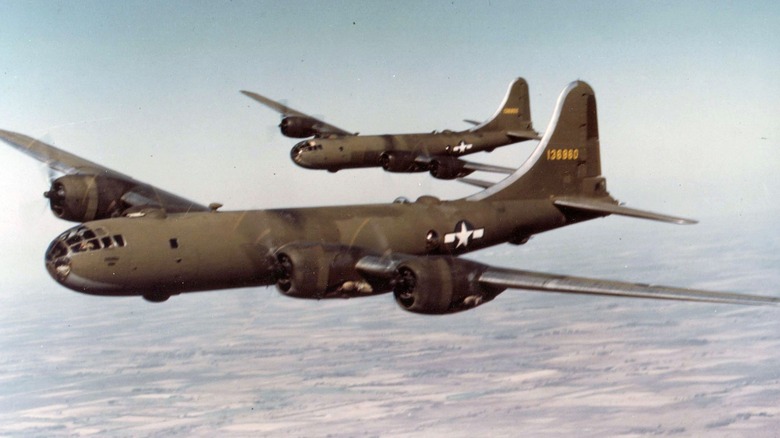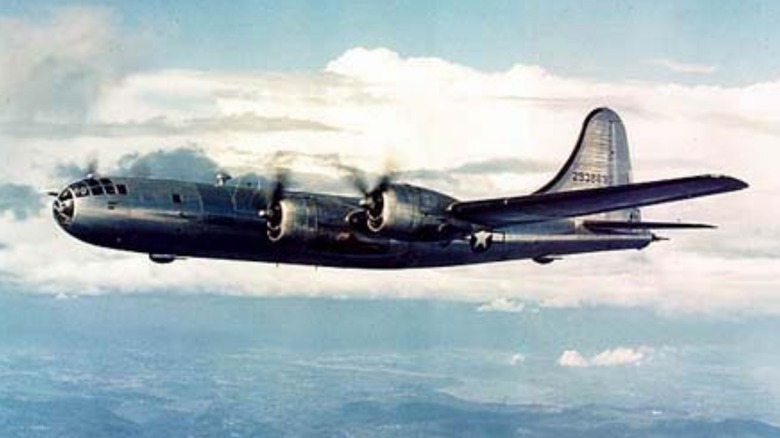How Much Did It Cost The Military To Build The B-29 Superfortress? (And Why Was It So Expensive?)
It's no secret that military machines like bombers cost a lot of money, but every so often, something truly pricey rolls off the assembly lines. During World War II, defense industries across the planet cranked out thousands of ships, airplanes, tanks, bullets, and canteens — whatever was needed for the war effort. Aircraft like Boeing's biggest achievement, the B-29 Superfortress became one of the most storied vehicles of WWII, and they weren't cheap. In fact, the program to build the B-29 was more than the entire cost of the Manhattan Project ($2 billion).
The program to build a nuclear bomb cost less than the aircraft that dropped them on Hiroshima and Nagasaki. At the time of its development, some called the B-29 program "the $3 billion gamble." While that may not seem like a lot of money these days (for defense spending), it was a lot in the 1940s. Adjusting for inflation, the final cost, which was $3.7 billion in 1940, amounts to $84.5 billion in 2025.
That included around $9 million for development costs before the bomber left the assembly floor. The cost of the first 14 B-29s delivered in 1941 for testing cost the U.S. Army $1.4 million each, or $32 million in 2025 dollars. As is common with weapon systems like the B-29, costs eventually came down, but not so much that building them became inexpensive. The B-29 remains the most expensive aircraft project of the war, and a lot went into making the bomber into one of the most legendary planes of WWII.
The cost of a single B-29 Superfortress
It can be difficult to ascertain the total cost of a complex military project from nearly a century ago, but that's not the case for the B-29. Fortunately, Nuclear Companion crunched the numbers and found out precisely what a single aircraft cost, as averaged out for the B-20-55-BW, which was a variant used for specific types of bombing missions. The total cost for a single bomber was $618,045, which is a little over $14 million today.
That was the total cost for the airplane and everything in it, but the numbers break down further. For the aircraft alone, without any bells and whistles, the Army Air Corps shelled out just over $363,000. The engines ran another $100,000, while engine equipment, propellers, other aircraft equipment, the radio, and ordnance all amounted to another $156,669. By the end of the war, the Army purchased 3,943 B-29s and canceled 5,092 when the war came to a close.
The average cost of the aircraft by the end of the program was $930,000. Of course, there's more to having bombers than merely procuring them. B-29s required maintenance and personnel. Each aircraft required a total of 46 people just to operate and maintain, and after the bomber hit 4,000 flight hours, it required an overhaul, depot maintenance, and modifications at the cost of $99,000. On top of that, the U.S. military spent a lot to fly its aircraft, as its operating costs were significant as well, amounting to $233.32 per flight hour.

